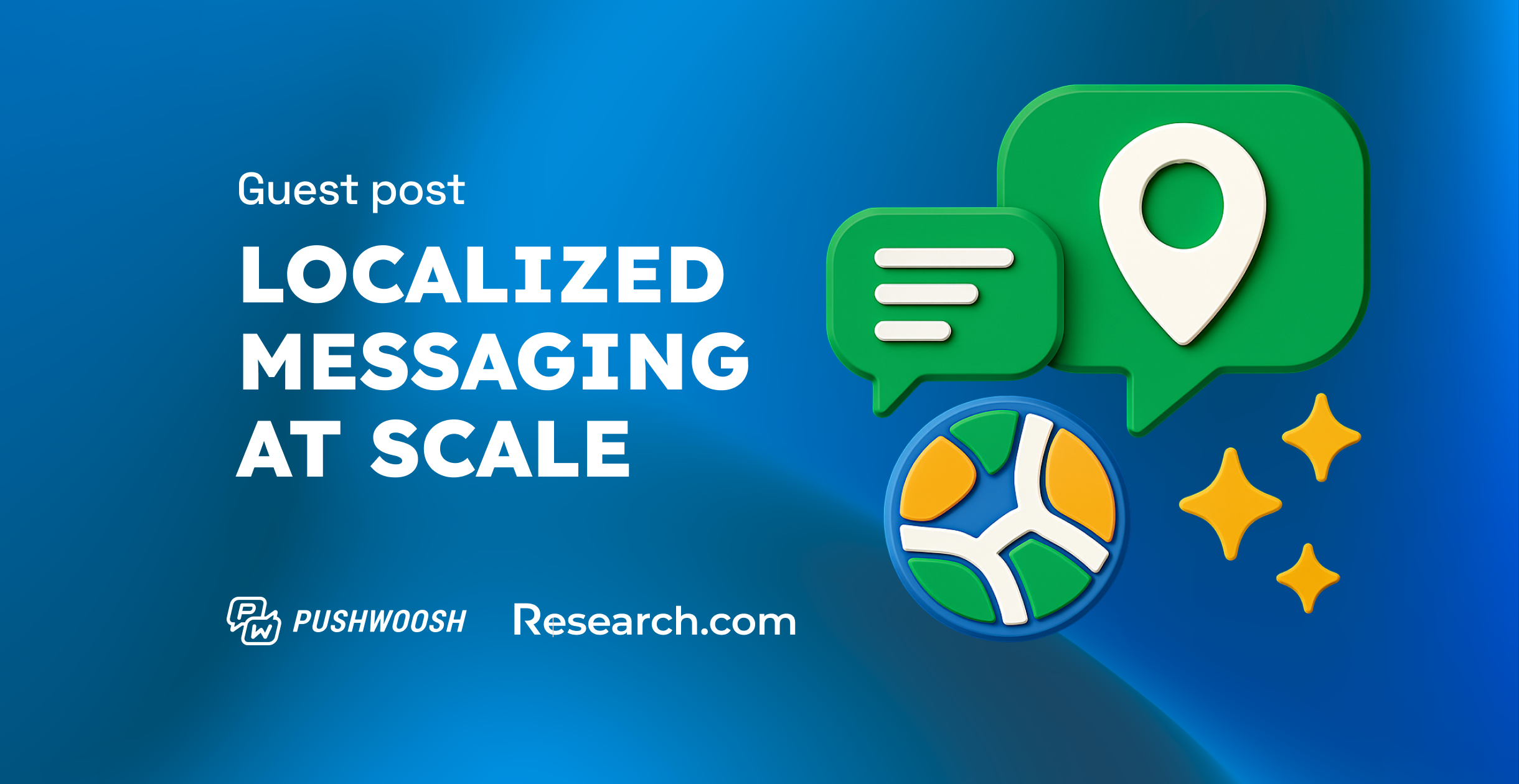Localized messaging at scale: Using customer engagement platforms for global reach
Speaking to everyone often means connecting with no one, as what works in New York might not work in Berlin or Tokyo.
Achieving local relevance—producing content that feels intimate, fosters trust, and eventually increases engagement—is the aim if you want to win over clients. But how can you accomplish it for millions of users? Modern customer engagement platforms (CEPs) are the answer.
These potent tools enable you to automate and deliver communications that are not just translated but also culturally and regionally tailored for audiences around the world, bridging the previously unachievable gap between personalization and scalability.
Core pillars of the global messaging strategy
Making every message feel personal to thousands or even millions of users at once is a balancing act based on two main ideas: deep localization and smart scaling.
According to the Zendesk 2025 CX Trends Report, customers really value personalized service, and it’s a major factor in keeping them loyal to a business. In fact, 61% of customers now expect conversations with AI to feel specifically designed for them.
As customers’ expectations for excellent service continue to climb, their patience for anything less is shrinking. A significant 63% of consumers are ready to switch to a competitor after just one negative experience.
Localization: Going beyond translation
Making your speech feel natural rather than merely translated is the goal here. True localization takes into account the minute elements that foster rapport and trust.
Language: Besides precise translation, it is important to honor regional idioms and dialects, as well as understand when to use (or refrain from) common slang.
Culture: It’s important to comprehend culture. In Australia, a formal tone may feel rigid, while in Japan, it may be considered courteous. Your message might succeed or fail based on your use of comedy, color, and imagery.
Region: One of the crucial regional details is communicating via certain platforms,such as WeChat in China or WhatsApp in Europe. Another aspect is taking into account customers’ time zones and conforming to local date and currency formats.
Scale: Achieving global efficiency
Here, technology allows for personalization that works as an intelligent system delivering flawlessly tailored messages.
Automation: Automated systems are your scale engine. With near-zero risk of error, you can send timely, consistent messages to each user by establishing trigger-based workflows, such as a welcome series upon sign-up.
Segmentation: This makes sure the appropriate person receives contextually relevant messages. The pinpoint relevance is achieved by grouping customers based on important characteristics such as geography, preferred language, or previous behavior.
Templating: This is where personalization and efficiency collide. You make a single master template with dynamic content placeholders. One template is subsequently transformed into thousands of distinct messages by the platform, which automatically adds the appropriate language, name, or local offer for every user segment.
Implementation via a customer engagement platform (CEP)
Having a fantastic plan is one thing, but the real magic happens when you put it into practice. A robust customer communication platform may act as your command center in this situation, transforming the ideas of scale and localization into an automated reality.
Here are the two main stages of operation: laying the groundwork and starting the engine.
Setting the platform foundation
You must establish a strong technical foundation before you can send a single message. This guarantees that your platform has the necessary resources and information to complete the task.
Choose the appropriate platform: Select a CEP that offers the following essentials: strong APIs to integrate with your current tools, multi-channel support (email, WhatsApp, SMS, etc.) to reach users worldwide, and sophisticated analytics to monitor what’s effective.
Create a single source of truth: Link the platform to your customer data to establish a single source of truth. You provide the CEP with all the context it needs to deliver a message that is precisely customized by using data such as user location, preferred language, and past purchases.
Running the execution engine
Now that the groundwork has been laid, it’s time to make your initiatives a reality. This cycle of operations is responsible for the large-scale delivery of tailored messages.
Build: Create adaptable master templates that include placeholders for dynamic content such as the client’s, local currency, or a unique offer for a given area.
Automate: Configure triggers and schedules to start your messaging campaigns on autopulot. For instance, an abandoned cart event could trigger a reminder in the user’s native language, or a new user signup could start a localized welcome series.
Orchestrate: The CEP strategically sends each message to the appropriate user on the appropriate channel. The same automated procedure may send a push notice to one individual and an SMS to another. Read more about choosing between push and SMS.
Analyze: Lastly, monitor important metrics such as clicks and conversions for every region using the platform’s analytics. You can use this data to pinpoint exactly what needs to be improved for even greater outcomes the next time.
Key outcomes and business impact
What are the benefits of using a localized message approach, then? When done correctly, the impact goes beyond a line on a spreadsheet; it changes how your team functions and how consumers view your business.Increased engagement
People pay attention to communication that feels relevant and personal. Key metrics like open rates, click-throughs, and interactions will directly and instantly increase as a result of your communications standing out from the crowd. You are now initiating a dialogue rather than broadcasting.
Improved conversion
Action is driven by relevance and clarity. Pricing, offers, and calls to action in the customer’s local context are much easier to perceive — and react upon.
This is the point at which you start forming genuine relationships rather than just transactions. Consumers who relate to your brand more deeply are those who feel seen and understood on a cultural level. This emotional connection is so potent that it can convert one-time customers into devoted supporters who will continue with you over time.
Operational efficiency
The fact that this method makes your workflow more efficient is possibly one of the biggest internal advantages. Automation and templating handle the heavy lifting, eliminating the need to manually manage dozens of distinct campaigns for various locations.
This significantly cuts down on physical labor, minimizes mistakes, and frees up your team to concentrate on strategic planning rather than tedious work.
From broadcast to connection
Businesses had to decide for years whether to appeal directly to a select few or to the masses with a general message. Customer engagement platforms have resolved this conflict by enabling both scalability and one-to-one customization.
Being able to communicate with genuine local relevance is now a crucial component of a successful company strategy that makes you stand out and get noticed, not just a tactical choice.
One localized conversation at a time, it’s about leveraging technology to create real, enduring relationships with customers—demonstrating to each user, wherever they may be, that you see and understand them.





